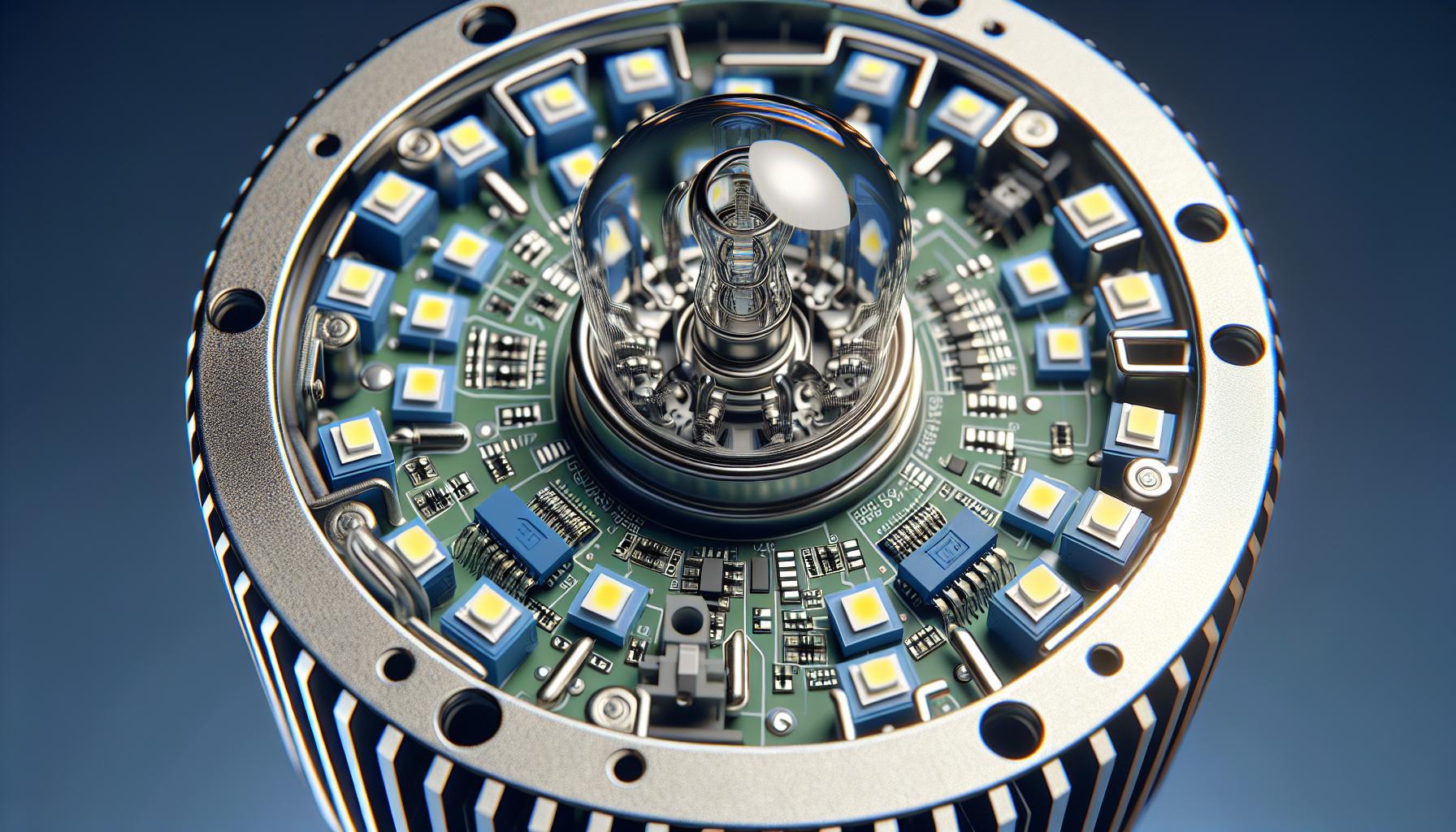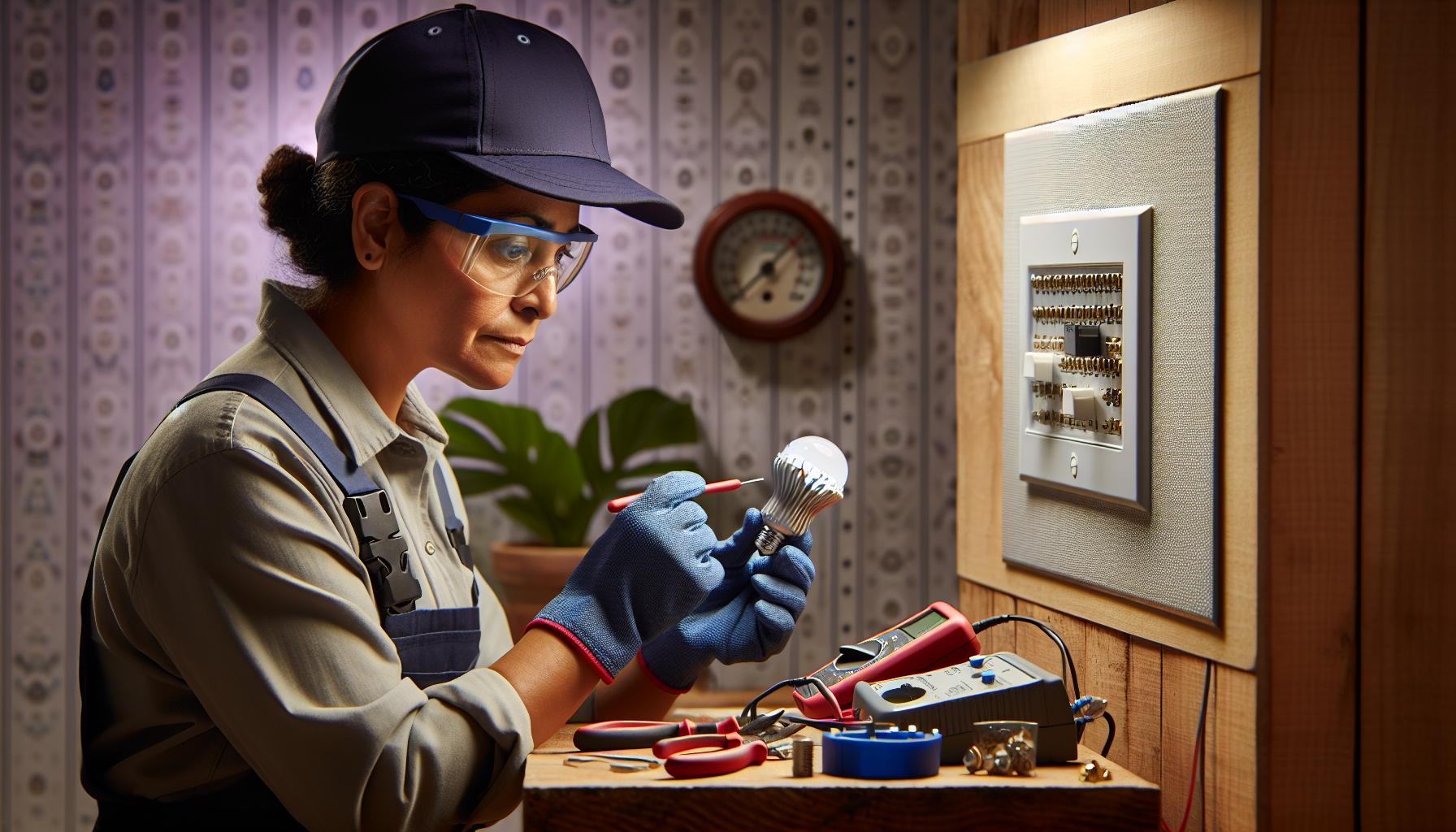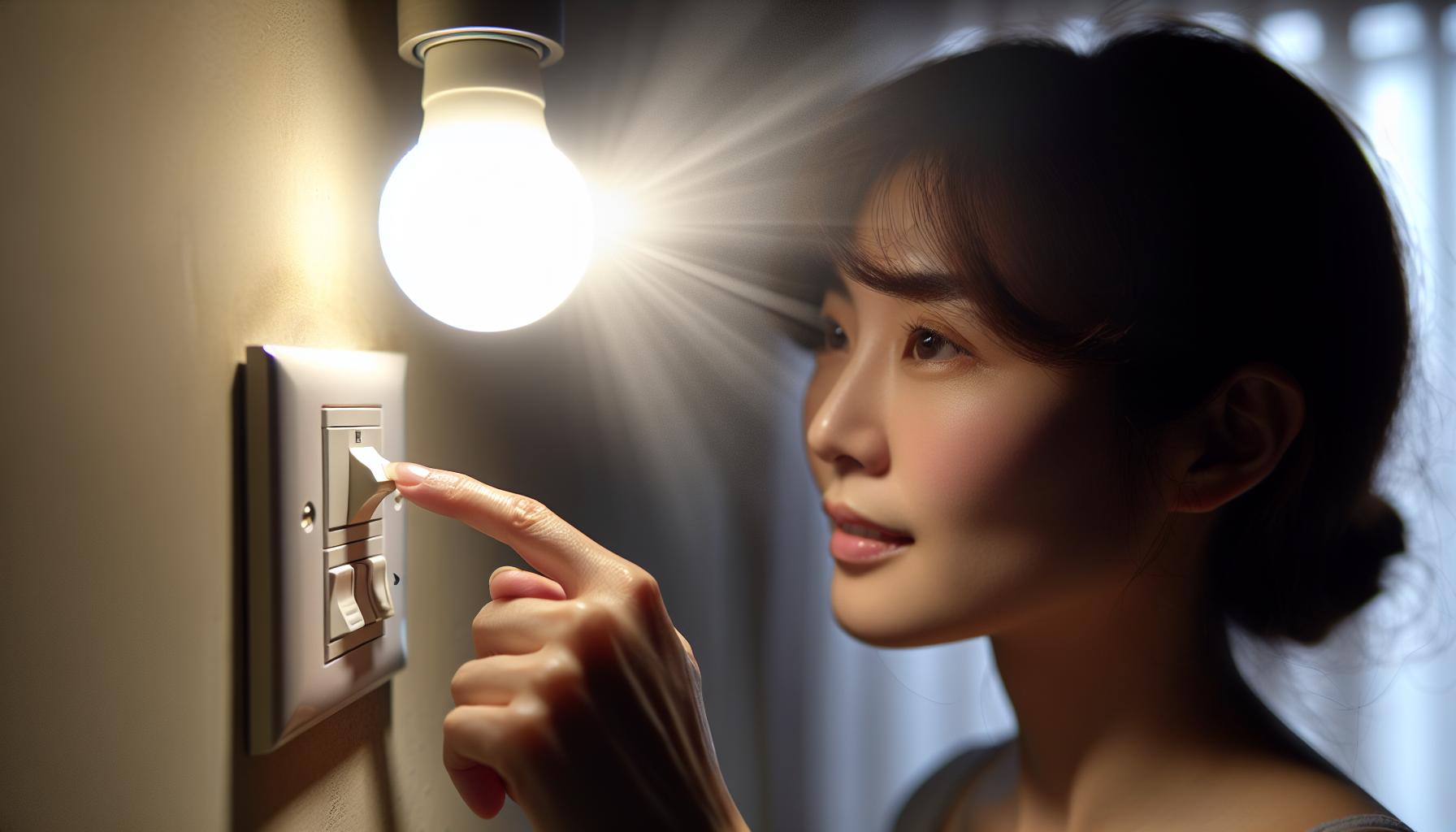Ever found yourself in a quiet room and heard a faint buzz or hum? It’s not your ears playing tricks on you—it might just be your LED light bulbs. While they’re known for their energy efficiency and long life, some LED bulbs can create a soundtrack you didn’t sign up for.
You’re not alone if you’ve noticed this peculiar sound. There’s a bit of science behind why these modern lights sometimes break the silence. Let’s shed some light on this illuminating topic and find out what’s really going on with your LEDs.
Why do LED light bulbs make noise?
You’ve probably noticed that occasionally, your LED light bulbs emit a faint, yet audible buzz or hum. As someone who loves tinkering with home DIY projects, you might wonder why your energy-efficient lights are making these unexpected sounds.
Electrical Dimming: One common cause of noise in LED bulbs is dimming. When you use dimmers that aren’t compatible with LED technology, they can cause fluctuations in the electrical current, leading to that buzz you hear in quiet rooms. This happens because traditional dimmers are designed for high electrical loads used by incandescent bulbs – not the low-power circuitry of LEDs.
Driver Components: Inside every LED bulb, there’s a driver that helps regulate the power supply. This driver includes small components called inductors which can sometimes vibrate when electrical current passes through them. These vibrations can translate into the humming sound.
Thermal Expansion: As you turn on your lights, they heat up, causing the components to expand. This change in temperature can lead to parts touching that normally wouldn’t, or it might cause expansion in areas that should remain firm, leading to noise as a result.
Troubleshooting Noisy LED Bulbs
If you’re hearing noise from your LEDs, here’s what you can do:
- Check Compatibility: Ensure your dimmer switches are compatible with LED technology. Many manufacturers provide a list of models that work best with their bulbs.
- Inspect Bulb Quality: Sometimes, a noisy bulb can simply be a sign of poor manufacturing. Try a different brand or model to see if the issue persists.
- Secure All Components: Loose fixtures or hardware can amplify noise. Tighten any components that may have worked themselves loose over time.
Remember, while the sound may be annoying, it’s usually not a sign of anything dangerous. However, if you’re concerned about the noise from your bulbs, don’t hesitate to consult with a lighting specialist or electrician who can provide you with more personalized advice based on your specific home setup.
Understanding the science behind LED bulb noise
Diving deeper into the inner workings of your LED bulbs, you’ll find that they are much more complex than their incandescent counterparts. LED technology relies on a driver to convert your home’s AC (alternating current) electricity to the DC (direct current) power that LEDs need to function. This conversion process is where most of the science behind LED bulb noise originates.
Drivers are prone to make an audible fuss for a few reasons. They often contain switching regulators that flick on and off rapidly to maintain the correct voltage for the LED. This rapid switching can cause electromagnetic vibrations which in turn may produce a buzzing or ringing sound that you can hear. Imagine the driver like a diligent bee, working hard inside your bulb, occasionally reminding you it’s there with its buzzing.
Another scientific tidbit you might find fascinating is coil whine. It occurs when the inductors, or coils, within the driver vibrate against the frequency of the electrical current they manage. Picture the coil as a tiny string on a musical instrument, vibrating to produce sound. When those coils aren’t snug as a bug in a rug, they’re lively enough to serenade you with an unwanted symphony.
Consider these points if your lighting project encounters the unexpected soundtrack of LED noise:
- Make sure your LED bulbs are properly seated in their fixtures.
- Check for loose components if you’re comfortable with taking a closer look.
- Ensure dimmer switches are LED-compatible to avoid mismatched technologies.
Remember, a little humming from your LEDs doesn’t mean your home lighting ensemble is off-key. With the right knowledge and a few checks, you can usually bring harmony back to your space and keep your lighting on point without skipping a beat.
Factors that contribute to LED bulb noise
« What Light Bulbs Are the Most Energy Efficient? Discover Money-Saving Options
How Do Light Bulbs Help Us: Discover the Surprising Benefits for Home and Health »
When you’re dealing with LED bulb noise, it’s not just about the internals of the bulb—your environment plays a role as well. Let’s shed some light on what affects the symphony of sounds your LED bulbs might make.
Electrical Compatibility
Firstly, dive into the compatibility of your LED bulbs with existing fixtures. Mismatched dimmer switches are notorious culprits, as they can create a fluctuating current that’ll have your LED bulb singing a tune you never asked for. Check that your dimmers are specifically rated for LEDs to ensure a harmonious relationship.
Quality of the Bulb
Secondly, consider the quality of your LED bulbs. Cheaper options might be lighter on the wallet but heavier on the noise. These bulbs tend to have lower quality components that don’t play well with the constant on-off nature of electric current, leading to that irritating hum or buzz.
Temperature and Ventilation
Another aspect to keep an eye on is the operating temperature and ventilation in the room. LED bulbs need proper airflow to prevent overheating, which can amplify noise. So if you’ve got a bulb in a tight space with poor ventilation, you might hear it complain.
Installation Issues
Lastly, the simple act of screwing in your bulb could be the start of a noisy fiasco if not done right. Improper installation can lead to loose connections which translate to audible vibrations. Make sure your LEDs are secure in their sockets, but don’t go overboard and wrench them in.
Remember, LEDs like to be treated with a gentle touch and a keen eye for detail. Approach your LED issues with the patience of a DIY master, and you’ll find these noise nuisances often have simple tweaks for silence. Keep exploring the details, and you’ll illuminate solutions that let your bulbs shine in peace.
How to identify if your LED bulb is making noise
Homing in on whether your LED bulb is the source of that pesky noise should be approached like any good DIY project: with a keen ear and a dash of detective work. Start by ensuring the room is as quiet as possible. You need a controlled environment to pinpoint the buzz or hum you’re chasing.
First up, switch off any background noise like music or television. Even the hum of a refrigerator can be a misleading culprit. Now, listen closely. Do you hear a faint hum or a buzzing sound? If it’s a yes, you’re ready for the next step. Turn off any other lights and electronics in the room – we’re looking for absolute certainty that the noise is from the LED bulb in question.
The next part is simple, but be careful. Turn the LED bulb off then back on. Did the noise disappear when the light went off, and resurface as it turned on? If that’s the case, you’re probably right about the source. For a more thorough check, swap the suspected noisy bulb with another LED bulb that you know is quiet. If the noise follows the bulb to a different fixture, then there’s your answer. Remember, troubleshooting is a process of elimination.
Lastly, it might seem obvious, but do check if the noise comes from the bulb itself or the fixture. A loose fixture or a lampshade that resonates with the bulb’s frequency can be sneaky sound contributors. Tighten everything up and see if the problem resolves itself.
By now, you should have a pretty good idea if your LED bulb is behind the mystery noise. Just remember, addressing this issue might require a look into a few different factors like compatibility, ventilation, and the quality of the LED bulb itself. Keep your DIY spirit ready – often, these nuisances have straightforward fixes once you’ve identified the troublemaker.
Tips to reduce or eliminate LED bulb noise
You’ve pinpointed your LED bulb as the source of that incessant noise, so what’s next? Dimming the racket from your LED lighting doesn’t require a degree in electrical engineering, just a few handy tips that you, as a DIY enthusiast, can easily master.
First and foremost, check dimmer switch compatibility. Mismatched dimmer switches and LED bulbs often result in noise due to incompatibility. Make sure your bulbs are paired with LED-rated dimmers. Not all dimmers are created equal; some are designed specifically for incandescent bulbs and could cause performance issues with LEDs.
If the dimmer isn’t the issue, consider the driver quality in your LED bulbs. High-quality drivers, albeit a tad costlier, operate smoother and quieter. Here’s a quick tip: reputable brands typically invest in better internal components. Opting for a well-known brand could spell the end for that annoying buzz.
Another strategy is to check for loose fixtures. Sometimes, the noise isn’t due to the bulb itself, but rather from a loose connection within the fixture. Tighten any loose parts and ensure the bulb is properly seated. If the noise persists, it might be wise to consult an electrician to make sure the fixture itself isn’t the problem.
Lastly, consider the operating temperature. LED bulbs are prone to noise if they overheat. Make sure your bulbs are in well-ventilated fixtures and not enclosed in a way that traps heat. Overheating can not only cause noise but also shorten the lifespan of your LED bulbs.
By following these steps, you’re well on your way to restoring peace and quiet. Remember, your quest for a noise-free environment doesn’t have to dim your enthusiasm for well-lit spaces. Keep tinkering, and you’ll find that silence is just a few twists or upgrades away.
Conclusion
You’ve got the tools now to pinpoint that pesky noise and hopefully quiet it down. Remember, it’s all about listening closely and eliminating other sources of sound to confirm it’s your LED bulb. Don’t forget to test with another bulb and check those fixtures too. If you’re still hearing that hum, it might be time to delve into dimmer compatibility or the bulb’s driver quality. A little troubleshooting can go a long way to bringing back the serenity to your space. So, take a moment, follow these steps, and enjoy the silence that comes with a well-lit, noise-free room.
Frequently Asked Questions
How can I tell if my LED bulb is making noise?
To identify if your LED bulb is making noise, ensure the environment is quiet and listen for a faint hum or buzzing sound emanating from the bulb. Turn off other lights and electronics to isolate the noise to the LED bulb.
What should I do if I suspect my LED bulb is noisy?
First, swap the suspected noisy bulb with another one you know is quiet. This will help determine if the noise is indeed coming from the bulb. If the noise persists with the new bulb, it may be the fixture that’s noisy.
Are there any tricks to reduce or eliminate noise from LED bulbs?
To reduce or eliminate noise from LED bulbs, check if your dimmer switches are compatible with LEDs. Also, evaluate the driver quality in LED bulbs, make sure fixtures are not loose, and ensure adequate ventilation to prevent overheating.
Could an LED bulb’s noise actually come from the fixture?
Yes, sometimes what appears to be bulb noise could actually be the fixture. Loose parts or incompatibility with the LED bulb can cause noise, which is why it’s important to check the fixture once bulb-related issues are ruled out.




